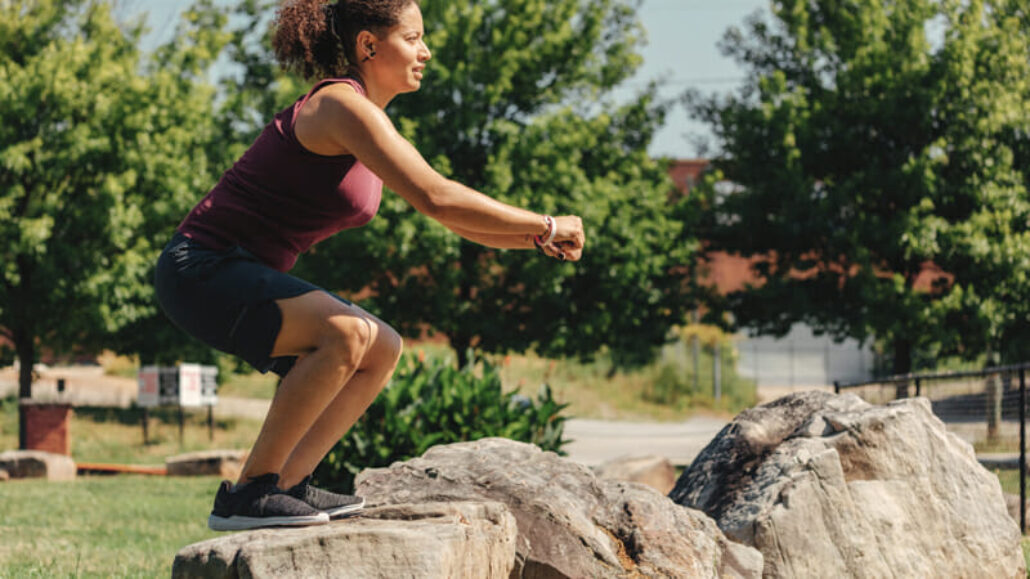Learn how the meniscus cartilage supports knee health.
We can thank our meniscus cartilage for the spring in our steps as we go about our day. The meniscus is one of the cartilage types found in the knee joint. When knee function becomes painful, meniscus damage is frequently the culprit. That’s why we asked fellowship-trained sports medicine surgeon Dr. Scott Pepin to help us understand what the meniscus is, how it functions in the knee, and why this tissue is so central to knee health.
What is meniscus cartilage?
“Within the knee, there are two types of cartilage,” explains Dr. Pepin. “Articular hyaline cartilage is a shiny cartilage that coats the bone; it’s the type of cartilage you see coating the end of a chicken bone. The second type is meniscus cartilage. Unlike hyaline cartilage, meniscus cartilage has both bony attachments to the tibia and attachments to the surrounding joint capsule. The meniscus cartilage itself is made up of a softer fibrocartilage. The knee has two C-shaped meniscus structures made of a softer fibrocartilage. These structures are anchored to the tibia by the peripheral capsular attachments of the menisci, which allow them more mobility within the joint.”
You’ll find the two menisci located directly between the tibia and femur, acting as a cushion between the bones. “The medial meniscus is a C-shaped structure found on the inside of the knee,” notes Dr. Pepin. “The lateral meniscus is slightly more round, and is more mobile than the medial one; it’s found on the outside of the knee.”
How meniscus cartilage functions in the knee jointThe meniscus serves two functions. “First,” says Dr. Pepin, “because it is a softer cartilage, the two menisci act as a shock absorber in the joint. Second, the meniscus pads increase the amount of surface area in the knee, spreading joint forces out over a larger area. This decreases joint loading forces to protect the bone and the underlying hyaline cartilage coating the bone.”
Causes of meniscus injury
“One thing that we have learned about arthritis and degenerative knee changes is that there is a strong genetic component influencing meniscus health,” notes Dr. Pepin. “We don’t have control over our genetics. As we age and reach our fifties and sixties, meniscus cartilage loses its water content, becoming harder, stiffer, and more brittle. These conditions make it more prone to injury with everyday activities.”
Do runners wear out their menisci faster?
“For a long time, we believed that runners were more prone to wearing out their knees faster than nonrunners were,” explains Dr. Pepin. “However, research has proved that belief wrong. It turns out that as long as knees are healthy, runners have a similar rate of joint degeneration as the general population as a whole. But it is important to note that this is true only as long as runners have a healthy knee and everything in the joint is intact.”
Once you have a meniscus tear, have lost cartilage, or have suffered cartilage damage, the story is different. Dr. Pepin has two guidelines for people with meniscus cartilage injuries. “First, I tell my patients with damaged knee cartilage to avoid repetitive high-impact activity like running. And second, I advise them to maintain a normal weight. Extra weight puts more pressure and strain on the knee—which could cause additional damage.”
Symptoms of meniscus cartilage damage
“There are a number of symptoms that flag a meniscus injury,” explains Dr. Pepin. He lists the most common indicators.
- Pain felt along the joint line of the knee. “You can locate your joint line on the anatomy of the knee by feeling for a soft spot below the kneecap, where the end of your femur meets the top of your tibia,” explains Dr. Pepin. “The joint line wraps 360 degrees around your knee.”
- Mechanical sensations of clicking, locking, popping, catching in the knee, or an inability to extend the knee, especially if accompanied by pain. “If you experience one or more of these symptoms, a piece of meniscus could be torn,” says Dr. Pepin. “Torn pieces of meniscus tissue can get stuck and prevent smooth motion in the joint.”
- Pain felt at the joint line during squatting or twisting movements.
- Swelling or stiffness of the knee joint.
- Limping or a feeling that the knee is locked in place when you try to move it could also indicate meniscus injury.
The most common meniscus injuries and treatments
“The type of meniscus tear we see most frequently is a degenerative meniscus tear,” notes Dr. Pepin. “The medial meniscus seems to be more prone to tearing. However, you can see acute and degenerative tears on both sides of the meniscus.”
“We treat many degenerative meniscus tears nonoperatively,” says Dr. Pepin. “In fact, some studies show that nonoperative treatment is just as effective as surgery for specific tears. A nonoperative treatment usually involves a cortisone injection to calm down inflammation, with physical therapy to work on joint strength and motion. If the tear doesn’t respond to these conservative treatments, surgery is another step we can consider.”
Summit Orthopedics offers comprehensive sports medicine expertise
From Olympians to pro athletes to kids in youth sports and those who just want to be more active—Summit Orthopedics delivers expert care by fellowship-trained sports medicine physicians. If you are recently injured or concerned about ongoing pain, Summit Orthopedics sports medicine specialists have the expertise to evaluate your discomfort and develop a plan to quickly and safely help you get back to being active.
Start your journey to stronger, healthier athletic condition. Find your sports medicine expert, request an appointment online, or call us at (651) 968-5201 to schedule a sports medicine consultation.
Summit has convenient locations across the Minneapolis-St. Paul metro area, serving Minnesota and western Wisconsin. We have state-of-the-art centers for comprehensive orthopedic care in Eagan, MN, Plymouth, MN, Vadnais Heights, MN, and Woodbury, MN, as well as additional community clinics throughout the metro and southern Minnesota.
More resources for you
- Meet Sports Medicine Surgeon Dr. Scott Pepin
- Learn more about symptoms of meniscal injury in the knee
- Check out Pepin’s advice about how many sports your child should play
- What Is Cartilage Injury, and What Can I Do About It?

